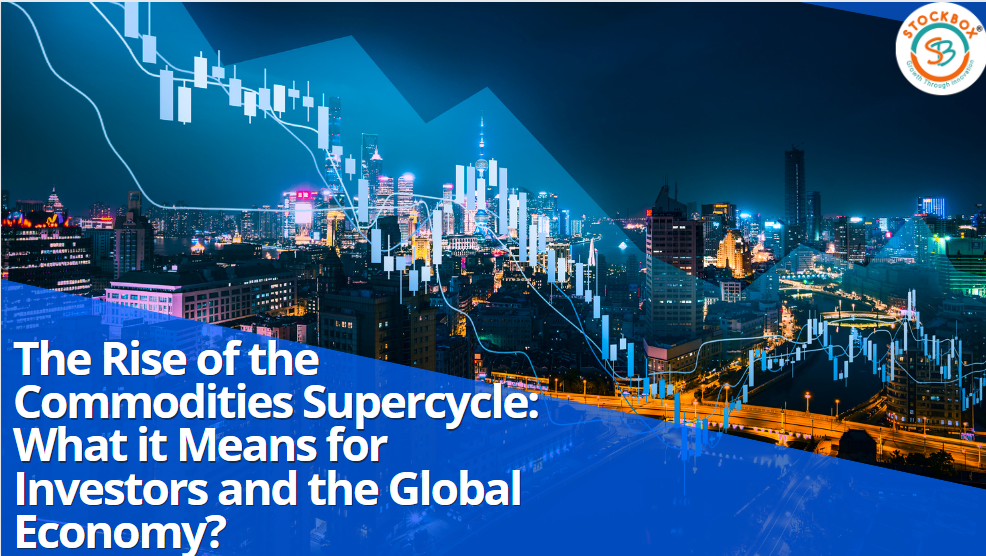Commodity supercycles are extended periods of strong demand and rising prices for a variety of commodities, including metals, agricultural products, and energy. These supercycles may extend for a decade or longer and are often characterized by several years of high prices, accompanied by a short time phase of correction before the cycle picks up again.
A supercycle in commodities may be fueled by a number of variables, including:
- Global Economic Growth: As companies and consumers need raw resources for production and consumption, there exists typically a correlation between an elevated global growth in the economy rate and a rise in commodity demand. In addition to this, with the ongoing industrialization and expansion, rising economies like China and India are also emerging as major consumers of commodities as well.
- Supply Restrictions: Trade constraints, labour strikes, production cuts, or natural calamities can all lead to a decrease in the supply of goods and an increase in commodities price. For instance, the COVID-19 pandemic resulted in production reductions and supply chain disruptions that decreased the availability commodities raising their prices
- Inflationary Pressures: Investors looking to hedge against inflation or other inflationary pressures like increasing interest rates or weaker dollar may find commodities as their best option. This also aids in increasing demand and thus prices of commodities in global markets.
- Developments in technologies: Technological developments can influence demand for certain commodities. For example the rising usage of renewable energy sources and electric automobiles requires substantial quantities of metals like copper, lithium, and cobalt for their manufacturing.
- Geopolitical issues: The price of commodities can be impacted by geopolitical issues and risks like trade disputes, political unrest, or natural calamities. For instance, imposing sanctions on particular nations may result in a decrease in the supply of certain goods, and natural catastrophes may disrupt the supply chain. Both these conditions can cause supply crunch and thus rise in the price of commodities sourced from the impacted nations.
It’s crucial to keep in mind that these variables can affect one another and may be extremely complicated as well. Also there is no assurance that these will always result in a supercycles. However, an amalgamation of these elements may support a supercycle in commodities, resulting in continually elevated prices and demand.

